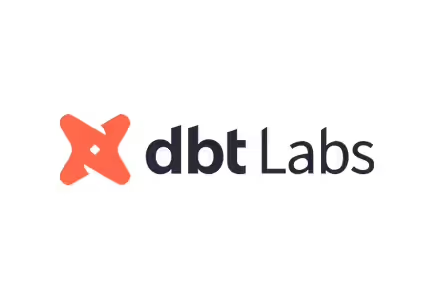Data value realization and business impact

Why Data Visualization Is Important
What is Data Visualization?
With so much information being collected through data analysis in the business world today, we must have a way to paint a picture of that data so we can interpret it. Data visualization gives us a clear idea of what the information means by giving it visual context through maps or graphs. This makes the data more natural for the human mind to comprehend and therefore makes it easier to identify trends, patterns, and outliers within large data sets.
Why is Data Visualization Important?
No matter what business or career you’ve chosen, data visualization can help by delivering data in the most efficient way possible. As one of the essential steps in the business intelligence process, data visualization takes the raw data, models it, and delivers the data so that conclusions can be reached. In advanced analytics, data scientists are creating machine learning algorithms to better compile essential data into visualizations that are easier to understand and interpret.
Specifically, data visualization uses visual data to communicate information in a manner that is universal, fast, and effective. This practice can help companies identify which areas need to be improved, which factors affect customer satisfaction and dissatisfaction, and what to do with specific products (where should they go and who should they be sold to). Visualized data gives stakeholders, business owners, and decision-makers a better prediction of sales volumes and future growth.
What Are The Benefits of Data Visualization?
Data visualization positively affects an organization’s decision-making process with interactive visual representations of data. Businesses can now recognize patterns more quickly because they can interpret data in graphical or pictorial forms. Here are some more specific ways that data visualization can benefit an organization:
- Correlations in Relationships: Without data visualization, it is challenging to identify the correlations between the relationship of independent variables. By making sense of those independent variables, we can make better business decisions.
- Trends Over Time: While this seems like an obvious use of data visualization, it is also one of the most valuable applications. It’s impossible to make predictions without having the necessary information from the past and present. Trends over time tell us where we were and where we can potentially go.
- Frequency: Closely related to trends over time is frequency. By examining the rate, or how often, customers purchase and when they buy gives us a better feel for how potential new customers might act and react to different marketing and customer acquisition strategies.
- Examining the Market: Data visualization takes the information from different markets to give you insights into which audiences to focus your attention on and which ones to stay away from. We get a clearer picture of the opportunities within those markets by displaying this data on various charts and graphs.
- Risk and Reward: Looking at value and risk metrics requires expertise because, without data visualization, we must interpret complicated spreadsheets and numbers. Once information is visualized, we can then pinpoint areas that may or may not require action.
- Reacting to the Market: The ability to obtain information quickly and easily with data displayed clearly on a functional dashboard allows businesses to act and respond to findings swiftly and helps to avoid making mistakes.
Which Data Visualization Techniques are Used?
There are many different methods of putting together information in a way that the data can be visualized. Depending on the data being modeled, and what its intended purpose is, a variety of different graphs and tables may be utilized to create an easy to interpret dashboard. Some visualizations are manually created, while others are automated. Either way, there are many types to meet your visualization needs.
- Infographics: Unlike a single data visualization, infographics take an extensive collection of information and gives you a comprehensive visual representation. An infographic is excellent for exploring complex and highly-subjective topics.
- Heatmap Visualization: This method uses a graph with numerical data points highlighted in light or warm colors to indicate whether the data is a high-value or a low-value point. Psychologically, this data visualization method helps the viewer to identify the information because studies have shown that humans interpret colors much better than numbers and letters.
- Fever Charts: A fever chart shows changing data over a period of time. As a marketing tool, we could take the performance from the previous year and compare that to the prior year to get an accurate projection of next year. This can help decision-makers easily interpret wide and varying data sources.
- Area Chart (or Graph): Area charts are excellent for visualizing the data’s time-series relationship. Whether you’re looking at the earnings for individual departments on a month to month basis or the popularity of a product since the 1980s, area charts can visualize this relationship.
- Histogram: Rather than looking at the trends over time, histograms are measuring frequencies instead. These graphs show the distribution of numerical data using an automated data visualization formula to display a range of values that can be easily interpreted.
Who Uses Data Visualization?
Data visualization is used across all industries to increase sales with existing customers and target new markets and demographics for potential customers. The World Advertising and Research Center (WARC) predicts that in 2020 half of the world’s advertising dollars will be spent online, which means companies everywhere have discovered the importance of web data. As a crucial step in data analytics, data visualization gives companies critical insights into untapped information and messages that would otherwise be lost. The days of scouring through thousands of rows of spreadsheets are over, as now we have a visual summary of data to identify trends and patterns.
Conclusion
We need data visualization because the human brain is not well equipped to devour so much raw, unorganized information and turn it into something usable and understandable. We need graphs and charts to communicate data findings so that we can identify patterns and trends to gain insight and make better decisions faster.
At Definian, we understand the importance of data visualization and what it means to our clients. We provide them with user-friendly and beautiful visualization features and tools to depict their data in a clear and meaningful way. We’re here to ensure our clients have everything they need to make quick and informed decisions based on sound data that is easy to interpret. Contact our friendly team of professionals at analytiks today to hear how we can better your business.

Why Business Intelligence Is Important
Why Business Intelligence is Important
We are living in the age of technological progression. Digital advancements have completely revolutionized our everyday lives, and one of the largest impacts felt has been in the business world. Companies now have access to data-driven tools and strategies that allow them to learn more about their customers and themselves than ever before, but not everyone is taking advantage of them. Today we’re going to breakdown Business Intelligence and why it’s crucial to the success and longevity of your organization.
What Is Business Intelligence?
Before we jump into the importance, we must first understand Business Intelligence and how it applies to your company’s strategic initiatives. The term Business Intelligence (BI) refers to the technologies, applications, strategies, and practices used to collect, analyze, integrate, and present pertinent business information. The entire purpose of Business Intelligence is to support and facilitate better business decisions. BI allows organizations access to information that is critical to the success of multiple areas including sales, finance, marketing, and a multitude of other areas and departments. Effectively leveraging BI will empower your business with increased actionable data, provide great insights into industry trends, and facilitate a more strategically geared decision-making model.
To illustrate BI in action, here are a few departmental specific examples of insights and benefits that can come from its adoption and application:
- Human Resources: HR can tremendously benefit from the implementation of Business Intelligence utilizing employee productivity analysis, compensation and payroll tracking, and insights into employee satisfaction.
- Finance: Business Intelligence can help finance departments by providing invaluable and in-depth insights into financial data. The application of BI can also help to track quarterly and annual budgets, identify potential problem areas before they cause any negative impacts, and improve the overall organizational business health and financial stability.
- Sales: Business Intelligence can assist your company’s sales force by providing visualizations of the sales cycle, in-depth conversion rates analytics, as well as total revenue analysis. BI can help your sales team to identify what’s working as well as points of failure which can result in dramatically improved sales performance.
- Marketing: BI provides the marketing department with a convenient way to view all current and past campaigns, the performance and trends of those campaigns, a breakdown of the cost per lead and the return on investment, site traffic analytics, as well as a multitude of other actionable pieces of information.
- Executive Leadership: Plain and simple, Business Intelligence allows organizations to reduce costs by improving efficiency and productivity, improving sales, and revealing opportunities for continuous improvement. Business Intelligence allows members of Executive Leadership to more easily measure the organization’s pulse by removing gray areas and eliminating the need to play the guessing game on how the company is doing.
Why Is Business Intelligence Important?
Now you know what Business Intelligence is, what it’s capable of, but the question remains; why is Business Intelligence so important to modern-day organizations? The main reasons to invest in a solid BI strategy and system are:
- Gain New Customer Insights: One of the primary reasons companies are investing their time, money, and efforts into Business Intelligence is because it gives them a greater ability to observe and analyze current customer buying trends. Once you utilize BI to understand what your consumers are buying and the buying motive, you can use this information to create products and product improvements to meet their expectations and needs and, as a result, improve your organization’s bottom-line.
- Improved Visibility: Business Intelligent organizations have better control over their processes and standard operating procedures, as the visibility of these functions is improved by a BI system. The days of skimming through hundreds of pages of annual reports to assess performance are long gone. Business Intelligence illuminates all areas of your organization helps you to readily identify areas for improvement and allow you to be prepared instead of reactive.
- Actionable Information: An effective Business Intelligence system serves as a means to identify key organizational patterns and trends. A BI system also allows you to understand the implications of various organizational processes and changes, allowing you to make informed decisions and act accordingly.
- Efficiency Improvements: BI Systems help improve organizational efficiency which consequently increases productivity and can potentially increase revenue. Business Intelligence systems allow businesses to share vital information across departments with ease, saving time on reporting, data extraction, and data interpretation. Making the sharing of information easier and more efficient permits organizations to eliminate redundant roles and duties, allowing the employees to focus on their work instead of focusing on processing data.
- Sales Insight: Sales and marketing teams alike want to keep track of their customers, and most utilize Customer Relationship Management (CRM) application to do so. CRMs are designed to handle all interactions with customers. Because they house all customer communications and interactions, there is a wealth of data and information that can be interpreted and used to strategic initiatives. BI systems help organizations with everything from identifying new customers, tracking and retaining existing ones, and providing post-sale services.
- Real-Time Data: When executives and decision-makers have to wait for reports to be compiled by various departments, the data is prone to human error and is at risk of being outdated before it’s even submitted for review. BI systems provide users with access to data in real-time through various means including spreadsheets, visual dashboards, and scheduled emails. Large amounts can be assimilated, interpreted, and distributed quickly and accurately when leveraging Business Intelligence tools.
- Competitive Advantage: In addition to all of these great benefits, Business Intelligence can help you gain insight into what your competitors are doing, allowing your organization to make educated decisions and plan for future endeavors.
Conclusion
In summary, BI makes it possible to combine data from multiple sources, analyze the information into a digested format, and then disseminate the information to relevant stakeholders. This allows companies to see the big picture and make smart business decisions. There are always inherent risks when it comes to making any business decision, but those risks aren’t as prominent or worrisome when implementing an effective and reliable BI solution. Business Intelligent organizations can move forward in an increasingly data-driven climate with confidence knowing they are prepared for any challenge that arises.
The Definian team is here to improve your organization’s efficiency by leveraging your existing data. We will provide you with the tools your business needs to transform complex, unorganized, and confusing data into clear and actionable insights. This helps to speed your decision-making processes and ensures that all your business decisions are educated and backed with reliable data, and lots of it! Get in touch with the Definian team today to see how we can improve your business!














